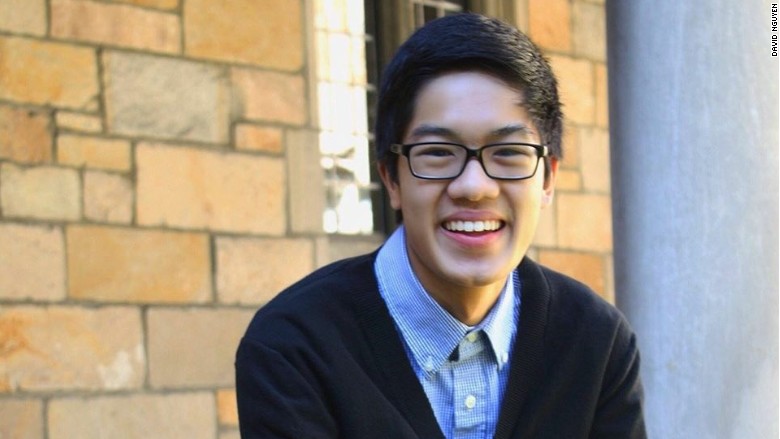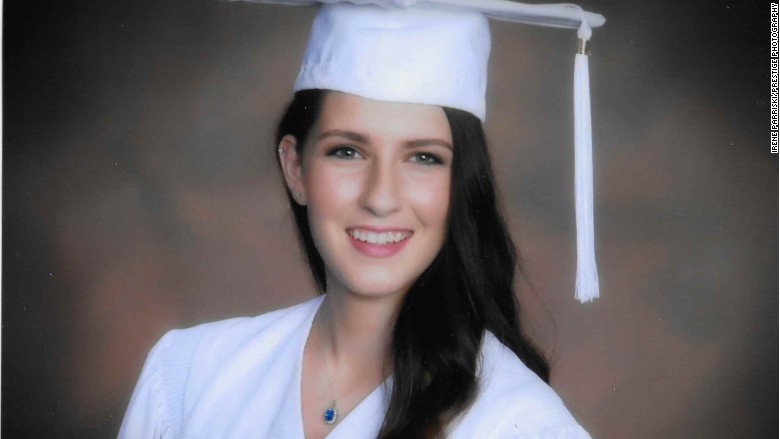Who Gets Money To Go To Fordham

David Nguyen wanted to get to college in Boston the fashion just a teenager can want something.
So he hustled to become into the school of his choice past earning a 3.9 GPA at his competitive Michigan loftier school and scoring a 30 on his ACT.
Information technology worked. He got into Tufts University, the schoolhouse exterior of Boston that admits just 17% of applicants and ranks in the top thirty schools in the country. Information technology also costs more than than $63,000 a year.
Nguyen knew that his parents, who make about $130,000 a yr, would demand financial assistance to afford it. He had filled out the Free Awarding for Federal Student Help (FAFSA) and used a FAFSA calculator to determine what his family unit would likely be expected to contribute.
He said the FAFSA calculator put his expected family contribution at $27,000 per twelvemonth. This would hateful the remaining $35,000 for Tufts would be made upwardly for in grants, scholarships and work-study. With that amount of assistance, Nguyen'south family could go far work.
But the school awarded him $10,000, almost a third of what he expected, leaving his family on the hook for $l,000 each year.
"I had to make a really hard decision," he said. "Would I get to a city I love and go into debt, or stay in-state?"
He chose to go to the University of Michigan, where they'll simply have to pay most $10,000 a year. Not going into debt now means he may somewhen be able to get for the master's degree he wants, in Boston, of grade.

That's the same choice Katie Hutchins made. The Georgia high school senior wants to exist a md. Information technology'south been her dream to report at the University of California in Los Angeles, where the pre-med programme, access to a neat hospital, and famous doctors on teaching staff would assist her on her way to medical school.
She got in, merely was awarded no grants, but the option of taking out $two,000 in student loans. Her parents, who are an uncomplicated school instructor and a headmaster of a high school, would be responsible for the total $58,000 in annual costs, nearly triple what the FAFSA figurer estimated as her family contribution.
She knew she couldn't take on that debt if she wanted to proceed to medical school, only turning downward the identify she worked for years to go into stung.
"I stayed up late at night, made As to make it. What was the indicate of working then hard when I can't fifty-fifty go?" she said. "I did my office as a pupil, but my parents felt similar they couldn't do their role as parents. Information technology was heartbreaking for them."
Related: Poor kids, rich schools
John Walsh knows that feeling. His son Patrick, another high school senior in Georgia, got into the schools he had his heart attack, Stony Brook University and St. John'south Academy in New York. But the aid packages he was offered would notwithstanding exit him saddled with $25,000 each year.
He and his married woman, a vice president of sales for a moving and storage visitor and a sales representative for a packing supply company, respectively, make a combined six-figures. Just he said their actual take-home is about $75,000, and tin't afford to put a third of that toward Patrick'due south college.
Walsh is still helping pay off his older girl'south loans, from when she graduated in 2009, and he was adamant that Patrick not get into debt.
"The economy beingness what it is, the jobs you're getting, information technology simply doesn't seem worth that $90,000 burden on your shoulders. Nosotros weren't going to accept more than debt on us," he said.
While information technology was a choice that made sense to him, and to Patrick, information technology frustrated him.
"Everything we've done since the kids were born was to provide them with everything they want," he said. He sent his children to a parochial school, which was a stretch, but he said it was worth it.
"Patrick worked hard, got accustomed to these really fine schools and he tin't practise it because mom and dad don't take the coin. That part is difficult on a parent."

Irene Parriski had a like chat with her parents, who are both in the military, after she got into the University of California San Diego.
Because her parents had spent so much time stationed in far-flung places before settling in New Bailiwick of jersey, she'd always yearned to go to college someplace that felt cultured, and different from the places she'd grown upwards. So she spent four years every bit a varsity cheerleader and head of a handful of clubs to heave her chances of getting accepted.
When it came fourth dimension for Parriski and her parents to determine on which college she would cull, she printed out pages of information about the schools' academics, enquiry areas and internships so they could weigh the claim of each one. Just they never got that far. UCSD only awarded her $i,500 in help, which meant the yearly cost would be nearly $55,000. The school was off the tabular array.
"It fabricated me so sick in my stomach, making the decision," she said. "It was all about money."
Source: https://money.cnn.com/2015/05/11/pf/college/college-financial-aid/index.html
Posted by: moorewharyince.blogspot.com

0 Response to "Who Gets Money To Go To Fordham"
Post a Comment